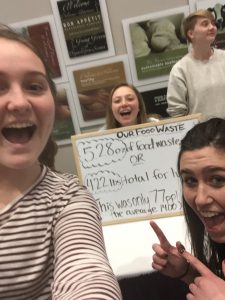How many pages do you print each day? While just spending a few moments in the library I see several printers each being used one person who looks like a senior is printing an entire text book he borrowed by a friend. An RA prints hall activities and posters for their hall and the rest of the printers are being used by students print their papers that are most likely due in a few hours or minutes. Although I know that everyone likes that warm feeling of freshly printed paper in their hands but just how detrimental is that to the environment and how much does a Furman student print in a semester? And how is paper recycled? These statistics took a long time of planning and a study that lasted four years.
In the year 2000 26,935 tons of paper were sold in the United States alone (2000, U.S. Statistics Bureau), for reference a ton of paper has about 200,000 sheets of computer paper which is comprised of 400 reams of paper, one tree is 16.7 reams While the process for recycling paper is better than throwing out your paper you received an F on, it’s still a process and does use harmful chemicals and ink to repaint paper into its final form. Also, another issue with recycling paper is that paper can only be recycled a number of times. The strongest paper is that which books are drafted from since a book will be read multiple times while a newspaper may only be read once. As with all recycled materials they can only be recycled down the strength scale. A recycled book will never be a book again and may turn into a newspaper eventually that paper will reach the end of its life and will be unrecyclable.
The study conducted by Shannon Bartholomew and Weston Dripps looked at paper consumption before and after a paper limit was set on Furman students. The study recorded the total printed pages of an average student by class year over an expanse of four years. The program also recorded major, sex and type of document that was printed. Princeton University conducted a similar study and concluded that their students printed a total of 11,040,362 sheets of paper over the course of two semesters. Shown below is the breakdown of how much that actually is.
| University | Princeton | Furman |
| Total | 11,040362 | 4,400,000 |
| Total per semester | 11,040,362/2 = 55,20,181 sheets | 4,400,000 /2 = 2,200,000 |
| Total Graduate | 2,845 | |
| Total Under Graduate | 5,260 | 2,800 |
Keeping these numbers in mind we have to account for the fact that Princeton is an R1 University, meaning there are quite a few graduate students and that the undergrad population is twice the size of Furman. Before reviewing this study, I had no idea how much paper was actually being printed on campus. I wanted to research this based off of the amount of paper left in the printers and I wanted to see undergraduates printing habits.
- Spencer Jones


